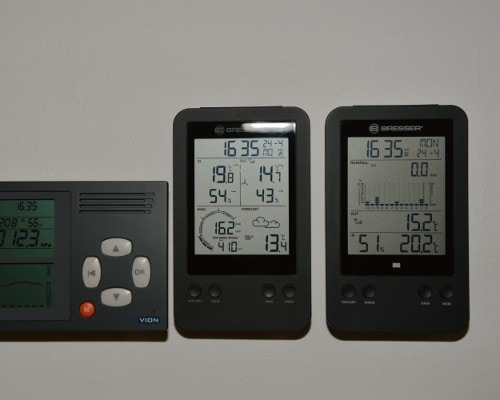Have you ever found yourself sitting comfortably in your living room on a hot summer day, heard the familiar hum and whoosh of your AC starting up and wondered what makes your air conditioner function?
Your AC unit is a complex system with many components, and at its core lies an incredible component known as the thermostatic expansion valve, or TXV.
This piece ensures that your AC system operates efficiently, providing you with the cool, refreshing environment you love. But what is a TXV valve? This post will unravel the complexities of your AC and dive into the fascinating workings of this important component.
What is a TXV? Understanding the mechanics
The thermostatic expansion valve is a quiet hero that often goes unnoticed in your HVAC system. Let’s break it down into its two key features to make sense of it.
Refrigerant regulation
You probably understand some functions of a heating, air conditioning and ventilation system as a whole, but what is a TXV for HVAC? What does it do? Well, the valve’s primary function is to control the flow of refrigerant into your AC’s evaporator coil.
Picture a busy crossing guard, ensuring just the right amount of traffic flows at specific times – that’s what the thermostatic expansion valve does for your AC system. It adjusts the flow of refrigerant based on the cooling demand, ensuring that your air conditioner doesn’t freeze over or underperform.
Response to temperature
The second crucial aspect of the question, “What is a TXV?” is how it responds to temperature. The valve has a little bulb (not quite like a light bulb) filled with the same refrigerant that’s used in your AC system. This bulb senses the temperature of the air leaving the evaporator coil.
If it’s too warm, the bulb triggers the valve to allow more refrigerant into the coil. If it’s too cold, it does the opposite. This responsive mechanism ensures that your home stays consistently cool, even on those long, hot summer days.
What is a TXV in HVAC? Efficiency in cooling
The thermostatic expansion valve plays a huge role in cooling efficiency. It streamlines the operation of your air conditioning system in several critical ways:
- Energy efficiency: With its precise control of refrigerant flow, the expansion valve allows your air conditioner to run at peak efficiency while cutting back on unnecessary energy use. More refrigerant is provided when temperatures are higher, while less is consumed when temperatures cool off – helping conserve energy as well as cut utility costs significantly.
- Preventing system overload: Without this valve, your air conditioner could become overwhelmed during particularly warm days if too much refrigerant floods its system. By providing an even and sustainable flow rate, the TXV prevents AC overload, avoiding potential damage in the process.
- Maintaining comfortable temperatures: The valve’s quick response to temperature fluctuations ensures your home remains comfortable regardless of external fluctuations by always applying sufficient cooling power – keeping comfort levels at their optimum levels.
- Prolonging system lifespan: By controlling refrigerant flow and preventing system overload, the TXV helps extend your air conditioner’s lifespan. This means fewer repairs and replacement needs, and overall lower maintenance costs.
The lifespan and maintenance of a thermostatic expansion valve
As with any mechanical device, thermostatic expansion valves have their own lifespans. On average, well-maintained valves typically last 10-15 years before needing replacing.
Routine maintenance should be an integral part of taking care of your system during its working life.
Like most things, its performance and reliability depend on proper care being given to it; frequent checks and cleanings can prevent minor issues from growing into bigger ones that could eventually cause premature failure. For instance, collected dirt or dust could affect the cooling efficiency, leading to worsened capacity and wasted energy.
Proper maintenance also ensures that the TXV operates at its optimal capacity. It keeps the valve responsive to temperature changes, allowing it to adjust the refrigerant flow accurately.
This, in turn, maintains a consistent, comfortable environment in your home while saving energy and reducing your utility bills.
What is a TXV? Spotting potential problems
Even the most reliable devices can face occasional hiccups, and the thermostatic expansion valve is no exception. Not to worry, though; most issues can be diagnosed and even fixed with a little know-how. We’ve included some troubleshooting tips below.
Inadequate cooling
If your AC isn’t cooling your home as efficiently as it used to, the TXV might be restricting the flow of refrigerant. To troubleshoot this, first ensure that the AC’s filter and coils are clean. If they are but the problem continues, contact a professional HVAC technician to check the component for possible malfunction.
High energy bills
An unexpected surge in your energy bills could indicate a problem with the TXV. If the valve is stuck open, it could allow too much refrigerant into the evaporator coil, causing your system to work harder and consume more energy. If cleaning and regular maintenance don’t solve the issue, it’s advisable to contact a professional for an inspection.
Frost on the evaporator coil
Frost build-up on the evaporator coil could be a sign of a valve that’s stuck closed, limiting the flow of refrigerant. In such a case, turn off your AC and let the coil defrost. If the frost returns, it’s time to call in a specialist.
Noisy operations
Unusual noises from your AC could be due to a malfunctioning TXV. If the component isn’t opening and closing correctly, it may create a gurgling or hissing sound. This problem necessitates a professional’s attention for accurate diagnosis and repair.
Need assistance? Contact River Valley!
The thermostatic expansion valve is a critical component of your air conditioning system that facilitates efficient cooling. Its main roles include maintaining energy efficiency, preventing system overload, ensuring comfortable temperatures, and prolonging your AC system’s lifespan.
Even with regular care, issues may arise. Prevention is the best solution, and by recognizing issues early, you can save your system and your wallet from a world of damage. Recognizing common problems to timely troubleshooting. Get professional assistance when needed as this will keep your unit in business longer.
Still wondering, what a TXV valve is and how it works in your system? Ask a professional! River Valley Air Conditioning, Inc. is your provider of air conditioning services for every part of your HVAC system so you can breathe easy.

